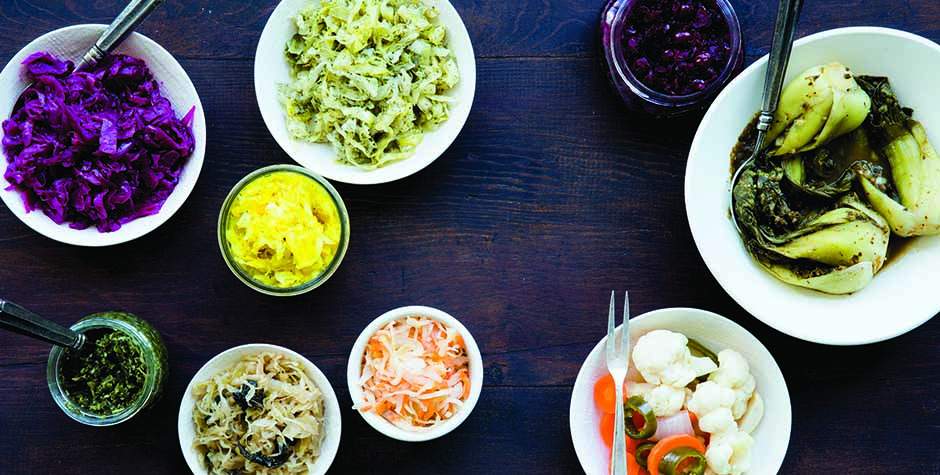Before refrigeration, fermentation was a way to preserve food. Today, this ancient process is one of the biggest food trends, with new fermented products popping up regularly on shelves. Why all of the excitement? It’s the combination of good nutrition and turning a variety of foods into rich, tangy creations that capture the flavor of food at its peak.
The Healthy Side
Along with naturally preserving foods, fermenting creates a “happy little environment” for gut-friendly probiotic bacteria like lactobacillus and digestive enzymes to grow, so our bodies digest the food more easily, says Kirsten Shockey, coauthor of Fermented Vegetables (Storey, 2014). “At the same time, vitamin content changes a bit during fermentation and actually goes up. For example, when cabbage is fermented, there is actually more vitamin C, as well as vitamins B12 and K.”
The most common question Shockey gets from people interested in fermenting foods is if they are safe. “My answer is, you can’t get it wrong when fermenting, because bacteria spores cannot live in an acidic, fermented environment,” says Shockey. “If anything is wrong, your five senses will know it.”
Basic How-To
Almost any vegetable can be fermented, Shockey says. Cabbage and cucumbers are the most common candidates, but Shockey suggests trying carrots or even basil. The basic process is to grate, shred, chop or slice your vegetable in a 2-quart jar and add salt. A brine will naturally form, preserving the vegetable. Fill a small jar or ziptop bag with water, and place on top of the vegetables to tamp them down. Set the jar out of direct sunlight in a cool place for 4 to 14 days. Check daily to make sure the vegetable is submerged, pressing down as needed. You can start to test the flavor as soon as day 4. “You’ll know it’s ready when it’s pleasingly sour and pickle-y tasting, without the strong acidity of vinegar,” says Shockey. Ladle your vegetable into smaller jars, tighten the lids, and store in the refrigerator for up to 1 year.
Why Salt?
Not only does it prevent unwanted bacteria from propagating, but it also keeps the vegetables c crisp, adds flavor and preserves vitamin content.
Time to Eat
There are so many ways to enjoy fermented foods. “They’re very unfussy and easy to incorporate in meals,” says Shockey. Use them like a condiment on burgers and sandwiches. Spoon some on a salad, or over rice or noodles. Or just eat them on their own.
Other Types of Fermented Foods
- Yogurt
- Kefir
- Tempeh
- Kombucha
- Miso
Ozuke creates an array of fermented and pickled delights at its Lafayette, Colorado, factory. Sauerkraut and kimchi are their specialities. Other tasty products include green tea sour pickles and umeboshi (pickled plums). See more at ozuke.com.

